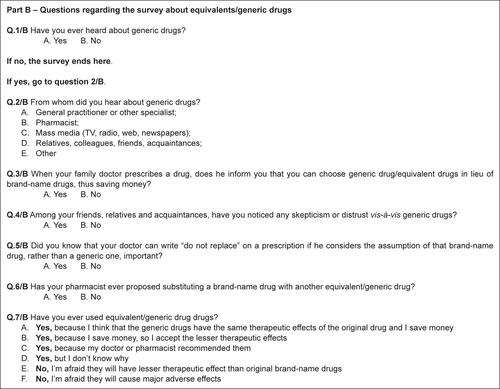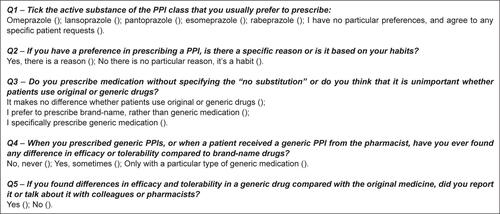Abstract
Purpose
Generic drugs use in the Liguria region is higher than the Italian average, but lower than in other European countries. No data exist about real-life prescription and level of awareness of generic drugs. In this study, we analyzed demographic, social, economic and cultural factors that may affect the level of awareness of generic drugs and their effective use.
Methods
We conducted a population survey using a structured questionnaire, administered to a sample of 8 outpatient clinics of general practitioners located in different districts of Genoa (Liguria, Italy). Multivariate logistic modeling was adopted to study the relationship between awareness/use of generic drugs and characteristics of subjects.
Results
Out of 2,000 outpatients surveyed, 95% were aware of generic drugs: these were mostly females (OR =2.2, 95% CI: 1.4–3.6), >35 years old (OR >6.0 vs 18–35 years), with a high level of education (OR >4.4 vs “elementary sch”), living in the west side of the city (OR =1.9 vs center); of these, only 59% declared that they effectively use generic drugs. Users were younger (OR =3.1, 18–35 years vs >65 years), with a high level of education (high school/university degree vs no title/elementary/secondary school OR =1.7), and were aware of the lower cost compared with branded drugs, and were mainly informed by pharmacists and physicians.
Conclusions
Although subjects were substantially aware of the existence of generic drugs, ~40% still did not use them; doubts about their efficacy seem to be mainly driven by the idea that cheaper drugs lead to lower product quality, in terms of efficacy, safety and tolerability. New education policies on generic drugs are needed.
Supplementary materials
Acknowledgments
The authors would like to thank participating patients and GPs for their invaluable support in this study. The author would like to thank Dr Claire Marie O’Neil for her English language support. This work was supported by the Italian Medicines Agency-AIFA (FV-AIFA-GEN_2008–2009-Ligurian Region Project).
The authors have not presented or posted this study or data anywhere and have solely submitted it to this journal.
Disclosure
The authors report no conflicts of interest in this work.




